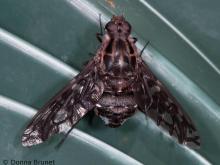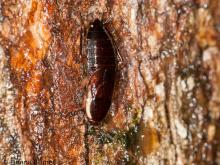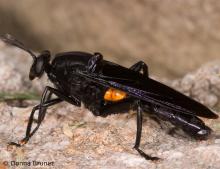Media

Species Types
Scientific Name
About 800 species in North America
Description
Resembling bees, or sometimes big, fuzzy mosquitoes, bee flies are a family of true flies and are not bees at all. Lacking the ability to sting, their bee mimicry helps them avoid many would-be predators.



























